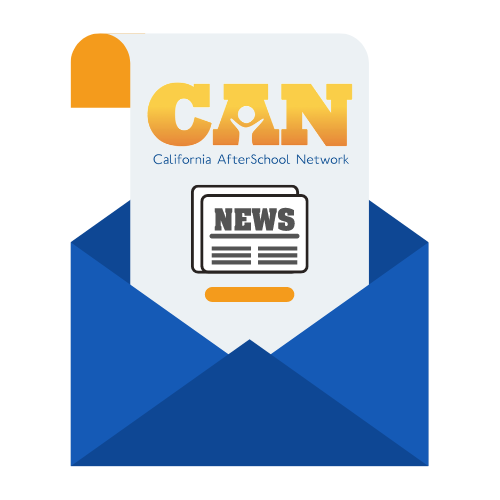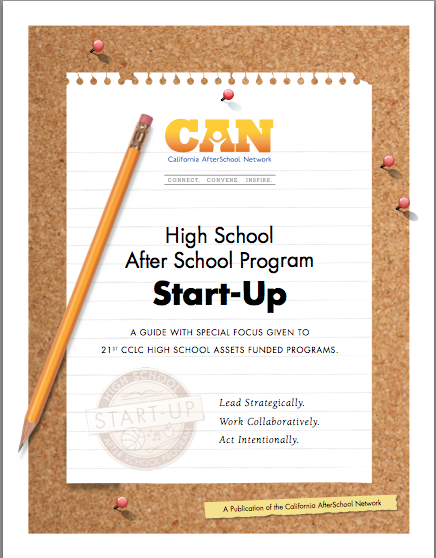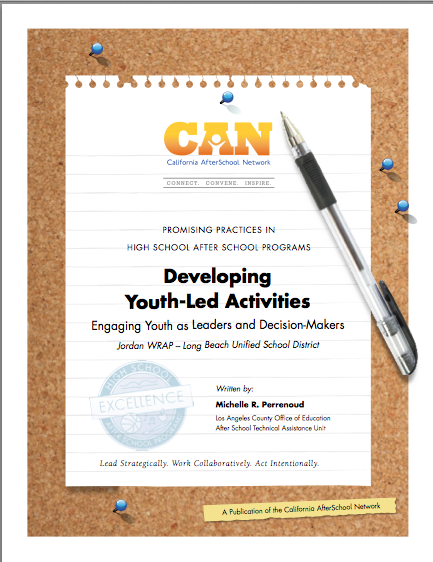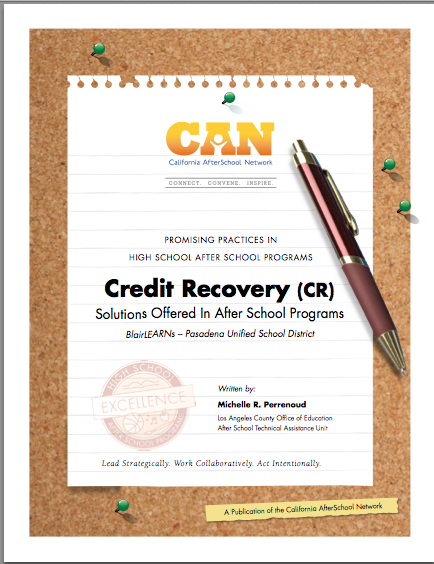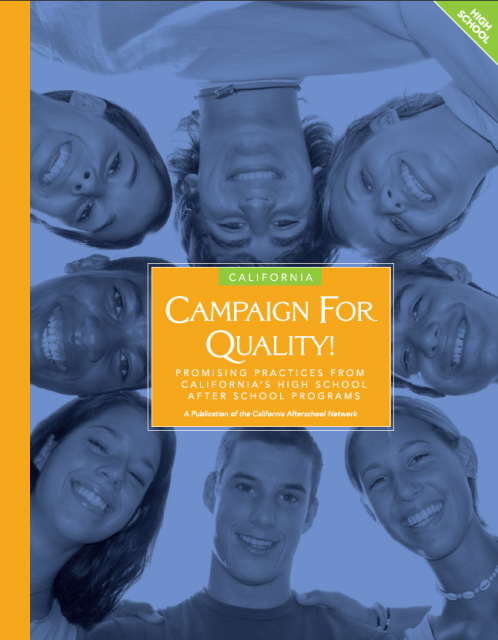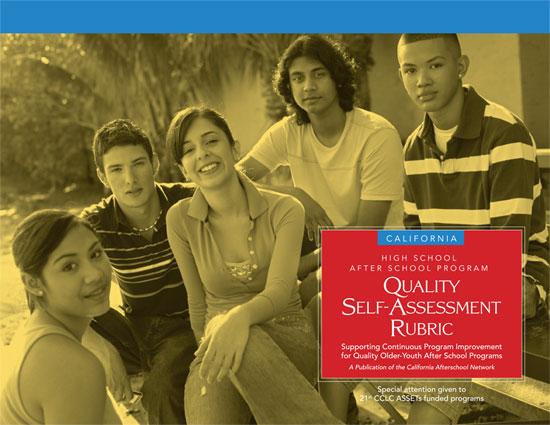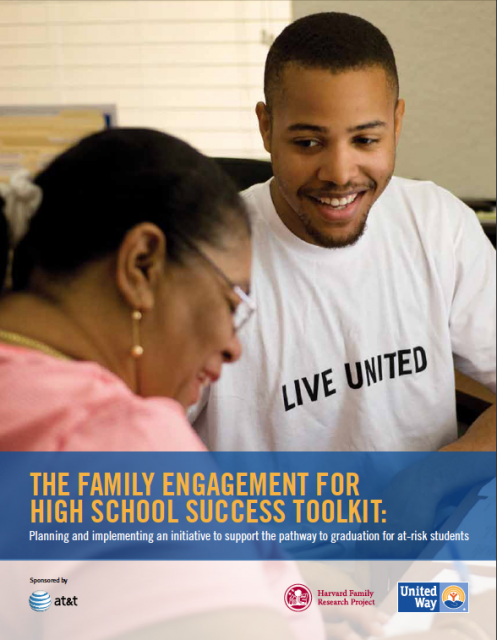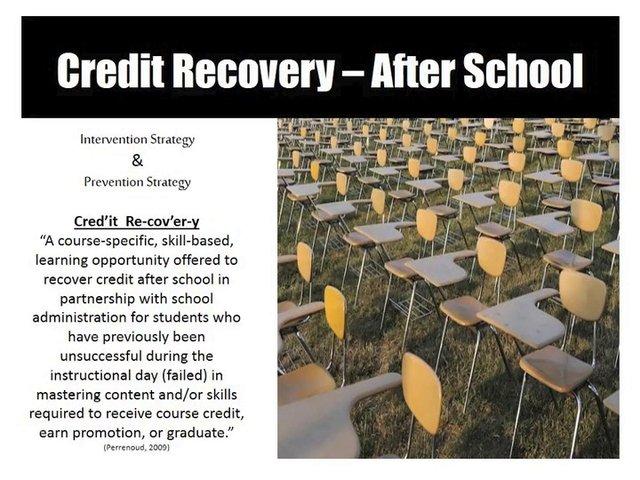Older Youth
High School After School Program Start-Up
A practical program start-up guide for 21st Century Community Learning Centers (21st CCLC) After School Safety and Education for Teens (ASSETs) programs. The guide provides a starting point for strategic planning and intentional action; from knowing the scope of 21st CCLC programs and grant assurances, to program philosophy, program coordination, collaboration, staffing, scheduling and logistics. The guide provides checklists and tips for coordinating the multiple aspects of ASSETs programs from program leadership to the site level.
Developing Youth-Led Activities
Quality after school programs incorporate what is commonly referred to as a youth development approach. This approach focuses on what children and youth need as they mature into responsible, caring adults. All effective youth programs have youth development at their core. Youth Development is not offered as a separate program or program component, it is a philosophy in which the principles are intentionally practiced and applied through actions and encompass everything done.
Credit Recovery Solutions Offered in After School Programs
It is a challenge to implement a new program within a school, especially if the program is offered after the instructional day. A new school program requires strategic leadership, collaborative work, intentional action, and lots of positive energy!
Campaign for Quality
Promising Practices From California's High School After School Programs
This guide is an installment of the California Afterschool Network Campaign for Quality. The Campaign for Quality seeks to connect after school practitioners to research-supported promising practices grounded in field experience.
This Guide seeks to highlight people, programs, and successful practices that are supported by research and achieving successful results in California’s high school After School Safety and Enrichment for Teens (ASSETs) programs.
High School After School Program Quality Self-Assessment Rubric (QSAR)
The QSAR Tool provides after school programs serving older youth with a clear and concise way to start important conversations about program quality. The QSAR Tool facilitates program quality improvement and support through a self-directed process, rather than through external monitoring. The QSAR Tool is meant to support a reflective process in which program staff and stakeholders explore their own programs and work collaboratively to develop strategies to enhance policies, procedures and practices.
What Works for Programs for Older Youth
A new Child Trends fact sheet, What Works for Older Youth During the Transition to Adulthood, examines the role that programs for older youth can play in promoting positive development and subsequent self-sufficiency in adulthood. It synthesizes the findings from 31 rigorous evaluations of programs; all of the programs evaluated youth outcomes during the transition to adulthood (ages 18 to 25), but programs varied in the ages of targeted youth. Among the findings:
Inside the Teenage Brain- a Frontline episode
New neuroscience research has shown that a crucial part of the brain undergoes extensive changes during puberty. It’s long been known that the architecture of the brain is largely set in place during the first few years of life. But with the aid of new technologies such as magnetic resonance imaging (MRI), scientists are mapping changes in pre-teen and teenage brains and finding evidence that remarkable growth and change continue for decades.
Adolescent Literacy Toolkit
The Secondary School Redesign Project website at the Council for Chief State School Officers includes the Adolescent Literacy Toolkit. The toolkit was developed by the Council and its partners. It contains resources for states and teachers related to developing state-level professional development activities and integrating literacy strategies and best practices in core content areas.
Engaging Older Youth: Program and City-Level Strategies to Support-Sustained Participation in Out-of-School Time.
The new report, Engaging Older Youth, examines the program practices and structural features of almost 200 OST programs across six cities, primarily serving low-income youth. Among these programs, providing leadership opportunities to youth participants and having staff members stay informed about their participants outside of programs stand out as two of the most important practices for retention.
Learning Around the Clock: Benefits of Expanded Learning Opportunities for Older Youth
Learning Around the Clock: Benefits of Expanded Learning Opportunities for Older Youth identifies and describes Expanded Learning Opportunities (ELOs) that improve academic performance, college and career preparation, social and emotional development, and health and wellness outcomes for underserved youth. The term “expanded learning opportunity” is used to describe the range of programs and activities available to young people that occur beyond regular school hours.
After School In Continuation High Schools:
Research, Resources, and Case Studies
This one page resource paper contains links to several Research articles, resources, and case studies of successful after school program models in continuation high schools.
Youth Impact: Youth Led Evaluation What Kids Can Do
When the facilitators of Youth IMPACT in San Francisco offered 17-year-old Lily a raise to $9.50/hour in her after school job, she jumped at the opportunity. “But it wasn’t the money,” she explains, “it was the project. I wanted to make sure that the work we did went on and didn’t end up in a closet somewhere.”
Media Literacy and Internet Safety Education
Sixty-nine percent of states report that protecting children from predators and other online dangers is one of their strongest needs.
PASE Afterschool Youth Outcomes Inventory
PASE presents the Afterschool Youth Outcomes Inventory, a comprehensive tool for afterschool practitioners to use in assessing and articulating their programs’ impact on youth. This inventory represents a collective effort to identify a full realm of outcomes for children and youth and present these outcomes in clear and accessible language. Programs can use this inventory to communicate their impact to variety of stakeholders as well as to more readily identify and measure this positive impact.
Meeting the High School Challenge: Making After-School Work for Older Students
The After-School Corporation (TASC) provides a description and lessons learned from one of the nation’s largest, longest-running efforts to offer teens high quality, structured after-school programs, filling more than 40,000 seats over nine years in New York City public high school after-school programs. Older students who participate in after-school programs significantly improve their chances for success, yet serving them effectively is one of the greatest challenges for the after-school field.
Strengthening Afterschool for Older Youth Through Policy and Practice
The American Youth Policy Forum recently released a policy brief entitled Strengthening Afterschool for Older Youth Through Policy and Practice: A Policy Brief. This four-page policy brief outlines reasons after-school opportunities are important and identifies five key areas that strategic policy efforts that can strengthen after-school opportunities including recommendations to ensure after-school opportunities for disadvantaged and older youth.
Older Youth Credit Recovery Webinar
The Credit Recovery in Out of School Time webinar focusing on transition, bridging, and credit recovery. Credit Recovery, part of a larger high school dropout strategy, allows students that are credit deficient to potentially graduate on time by providing intentional opportunities through increased access. Participants will be shown why credit recovery in “out of school time” makes sense and is a good fit for both the school and its students.
Engaging Enrichment Clubs Webinar
Engaging Enrichment Clubs is a 45 minute webinar brought to you by the Older Youth Committee of the California AfterSchool Network. This webinar identifies why engaging enrichment clubs are so crucial to expanded learning programs and features two interviews with Site Coordinators who have been very successful implementing high-quality, engaging enrichment clubs in their older youth programs.

